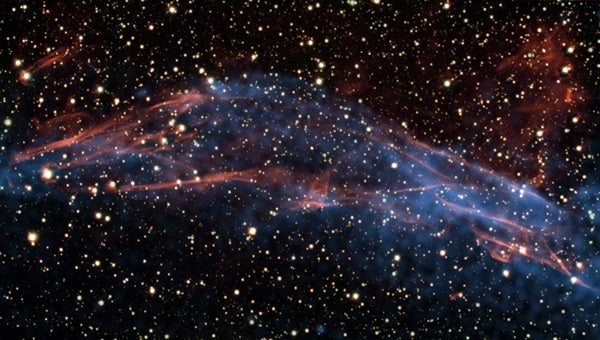In A.D. 185, ancient Chinese astronomers observed a bright new object burst onto the scene in the night sky. The beacon remained visible to the naked-eye for more than eight months, leading the astronomers to refer to it as a “guest star.”
We now know this “guest star” was actually a supernova — the first supernova ever documented in historical records. Scientists call it SN 185.
Recently, researchers captured a new image of this exploded star’s remains, revealing details about the supernova remnant’s origin and evolution over the past two millennia. The new shot was taken by the U.S. Department of Energy’s Dark Energy Camera (DECam) on the Víctor M. Blanco 4-meter Telescope at Cerro Tololo Inter-American Observatory in Chile.
SN 185: The first recorded supernova
The supernova remnant, named RCW 86, is located some 8,000 light-years away between the constellations Circinus and Centaurus.
For decades, astronomers thought RCW 86 was the result of a core-collapse supernova, according to a NoirLab news release. A core-collapse supernova occurs when a massive star runs out of fuel and collapses in on itself, triggering its grand finale.
But core-collapse supernovae tend to produce crowded remnants that expand relatively slowly. And if RCW 86 was the result of a core-collapse, it should have taken some 10,000 years to reach its current size. That would mean it couldn’t have been the supernova that ancient Chinese astronomers observed in A.D. 185.
However, a 2006 study published in The Astrophysical Journal found that RCW 86 exhibits an extremely high expansion velocity. This gave it an approximate age more in line with the “guest star” documented some 1,800 years ago.
Later X-ray data then showed RCW 86 is also iron rich, indicating it is not the result of a core-collapse supernova, but instead a type Ia supernova. These particularly powerful stellar bombs detonate when a white dwarf siphons too much material from a nearby companion star, triggering the brightest of all supernovae.
The detailed new DECam image helps shed further light on why RCW 86 is expanding so quickly, too. Scientists now think that as the white dwarf was feeding off its companion, high-velocity winds blew gas and dust away from the system, carving out an expanding cavity around it. Therefore, when the white dwarf finally went supernova, the material it ejected was free to expand very quickly.
If only the ancient astronomers who first documented the supernova could know what we do now…










